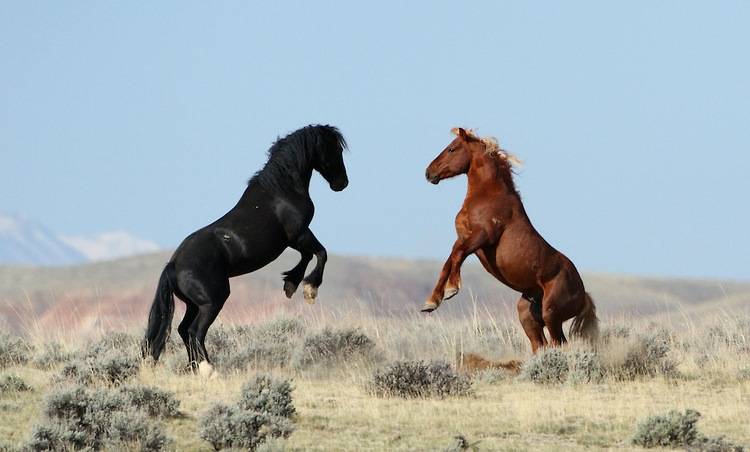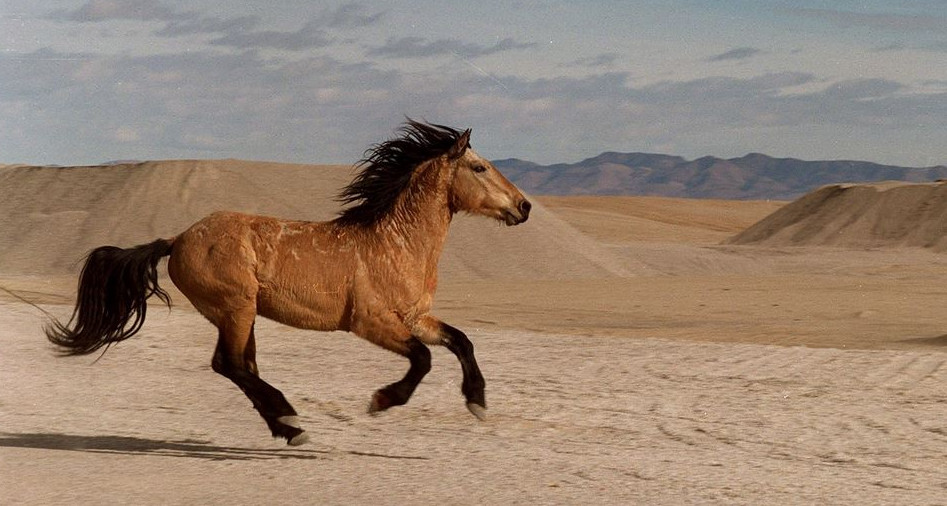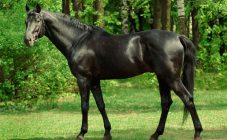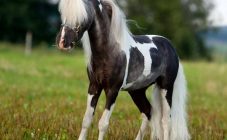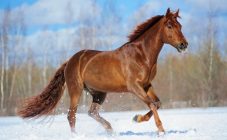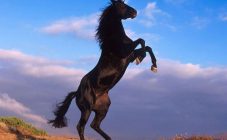Content:
The Mustang is a wild horse that evokes associations with freedom, rebellion, and rebellion. It can be found in the American prairies and in Asia. The official homeland of the Mustangs is North America. It is believed that they owe their origin to the thoroughbred horses of Spain and France. Now their number is steadily decreasing.
The origin and development of the breed
The word "mustang" in translation means "wild". As a biological species in their original form, they disappeared from American lands more than 10 thousand years ago. The first to bring wild horses to America were the Spaniards. It was they who became the discoverers of the American continent. And the Europeans spread them all over the world. The favorable climate of that time suited the animals well: some individuals who strayed from the herd felt quite comfortable.
In the first half of the XX century. the fashion for breeding horses of various breeds began. Wild steppe stallions were hunted. The strength and endurance of horses has become the impetus for attempts to domesticate them.
The reason for the extinction of mustangs today is the thoughtless extermination of them in the past. In reserves and national parks, this biological species is carefully protected. The mustang horse is on the verge of extinction.
Description: exterior and lifestyle features
Mustangs are herd animals. Outside the herd, it is difficult for them to survive in the desert. A mustang that has strayed from the herd is defenseless against predators and cannot survive in the wild. The herd always has a leader - an alpha male. Its main function is to protect other horses from predators. Often at the head is a horse-fighter not younger than 6 years old, to which other individuals obey. If there is no leader, the main mare takes his place. It is not necessarily the strongest mare. They have no rivalry among themselves. The main thing is experience. When danger arises, the so-called "square" is formed in herd: females and foals are in the center, stallions surround them. They turn towards the enemy with their croup, which is explained by the strength of the hind hooves. This is their main weapon.
Mustangs are not particularly demanding for food. They feed on plant foods: shrubs, grass growing where they graze. When there are few plants, even the bark of trees and low-growing branches can eat. Wild horses live most often in the steppes. These places are poor in water and plant resources. The herd can search for food and drink for several days, passing a large number of kilometers. They are able not to drink or eat for several days. The leader of the herd plays an important role in finding food. It is he who leads the rest of the horses. This intelligent animal with excellent memory is able to find a way to a watering hole, to find pastures. When the herd migrates, the main mare is in front, and at the very end is the male. Thus, they protect the herd from predators.
In cold winter times, individuals keep warm by snuggling together as tightly as possible. Food is obtained by hooves from under the snow. In winter, old, weak, sick individuals become easy prey for predators.Winter cold is the most difficult time for the herd.
Appearance
The Mustang is a medium-sized horse. Its maximum weight is 400 kg. Height 150 cm at the withers. Thanks to this lightweight body type, he can reach great speed while running. There are individuals with piebald, bay, red, black color.
Horses are herd animals; they live in families with the main male and female. The main function of the alpha male is to protect the herd. The wild steppe horse shows its strength, as a rule, in battle. He is experienced, which is why other individuals trust him. When the male is absent, the female takes his place. She protects the herd from the attacks of enemies, taking him to safety.
Mustang food
Mustangs, like other horses, are omnivores. It is a myth that they feed exclusively on hay, oats. They can also eat meat. Grass forms the basis of the animal's diet. For a long time they may not eat any food at all. With food available, adults consume 5-6 pounds daily.
To keep a horse at home, it is important to observe the following rules:
- Regularity is the main rule of animal nutrition. This results in the production of edible juices at the same time, which contributes to good digestibility of food. Irregular eating leads to indigestion, causing gastrointestinal diseases.
- After feeding, the animal needs rest. Ideal - 1-1.5 hours before and after meals.
- Consistency, distribution of feed. First of all, they give straw (hay) for food, after which they feed grain, juicy, fresh food. And 1⁄2 part of the daily roughage is recommended to be given at night. The rest is divided into equal portions for morning and afternoon.
- Compliance with the drinking regime is important. The horse's water requirement per day is 35 liters. You need to water the animal at least 3 times a day. At high ambient temperatures, this rate is doubled. It is forbidden to give cold water to a tired, sweating horse.
How to care
Most often, domesticated horses live in stables. A small amount can be placed in the stable. The stable should be composed of separate boxes. Among them are stalls and stalls. The latter are a more spacious version of the dwelling, while the stables are cramped enclosures where the movement of the animal is limited. Stalls are set aside for mares with offspring, as they are more spacious.
The horse must be cared for appropriately with regular procedures that include:
- cleaning the hooves;
- skin cleaning;
- combing the tail, mane.
In hot or warm seasons, it is imperative to bathe the horse at least once a week.
Today mustangs are a rare horse species. In some countries, they are protected by law. Anyway, they are difficult to train because of their freedom-loving disposition. But, despite this, such horses do not leave anyone indifferent. Moreover, mustangs are unpretentious in food, strong and hardy. Proper grooming is an important requirement for keeping these horses. He will help to fully reveal all the qualities and abilities of the mustang.
